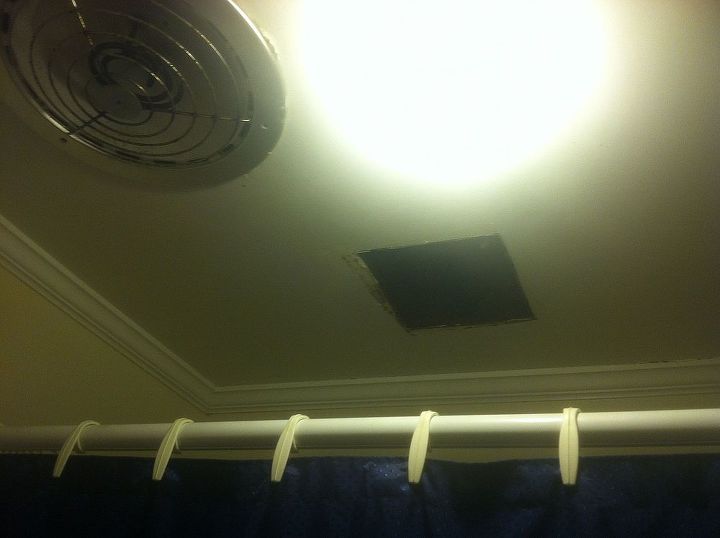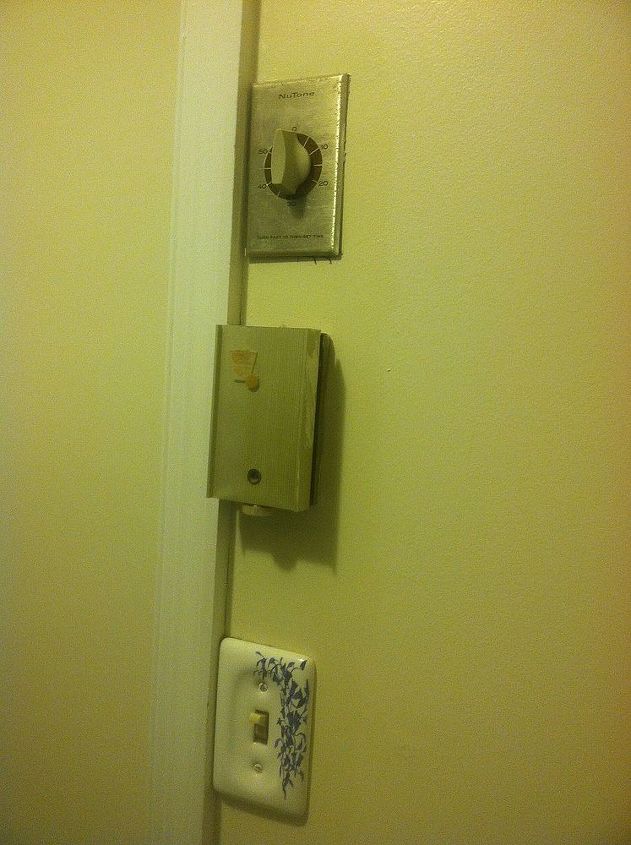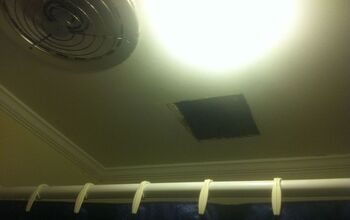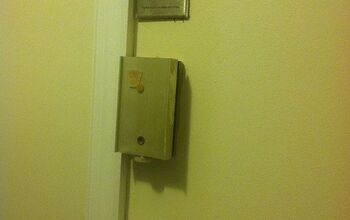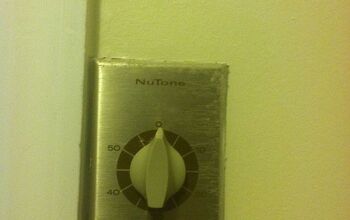Replacing a defective bathroom vent

I live in an older home, built in 1968, and the bathroom vent over the shower does not work. I've lived in the home for about 9 years now, and I don't think it's ever worked, but now realizing the importance of replacing it, due to some paint on the ceiling beginning to crack, and a couple of mold spots here and there. I took the vent cover off, and can tell that the fan is one of those squirrel cage type fans, or the shape of a snail shell. The metal box that the fan sits in is pretty much rusted through and through. Replacing the fan seems relatively simple, but a couple of questions I have are here:
(1) The size of the existing box, and hole in the ceiling is 9.5 x 10.5. It seems that I am going to be looking for a fan that meets these specs? I see fans that are smaller in size, but that would leave an opening around the fan. How is a situation like this resolved?
(2) You can see in the picture where the existing vent in the rustied out box is located. When I look at fans online, the location of the vent hole on the fan seems to be in a different location, such as the other side of the fan. Am I looking for a fan with the vent in the very same location?
(3) The proper removal of old and installation of new is to remove the rusty box currently in the ceiling, replacing it with a new fan that meets the same dimensions and specs as the old box, correct?
This fan is/was controlled by a timer switch on the wall. I am wanting to replace it with a standard on/off rocker switch.
All in all, from what I am describing, do I sound like I'm on the right track for replacing this fan? There are so many things around my house I want/need to fix/upgrade, and just having the confidence and know-how can get me up and running.
Thanks,
Ron
-
Ok, I had a nice talk with my father-in-law, and pretty much learned how to replace the fan. Gotta remove the old, rusty housing from the attic, then buy me one that is equal to or larger, and cut out the existing hole in the ceiling to accomodate the new fan.
 Ron Anderson
on Jan 30, 2013
Helpful Reply
Ron Anderson
on Jan 30, 2013
Helpful Reply -
-
How are you with electricity? The old circuit will need to be deactivated, the wires disconnected & rehooked up to the new one. When you buy a new one you will see a ton of options - as this was probably wired just for the fan you will need to get a fan only unless you have an electrician that can wire a new line for any additional switches. One of the most important things to check on the fan (besides it being ENERGY STAR) is the sounes or how load it is - the quieter the better Next question & item you will probably have to correct is how is it vented - is it being vented outside (preferably through the roof or a gable end) - if not you will need to correct that or you will be introducing not only smells to the whole house but also moisture which will make those mold spots seem like a small problem. Once that is all done - you need to eliminate the customary light switch & install a timer. For more on this... http://www.buildingmoxie.com/2012/06/installing-a-bathroom-fan-timer/
 SLS Construction & Building Solutions LLC
on Jan 30, 2013
Helpful Reply
SLS Construction & Building Solutions LLC
on Jan 30, 2013
Helpful Reply -
-
many fans are pretty standard in sizes so finding one that will fit should not be that difficult. Many of the higher end fans allow for adjustment of which way the fan discharges. So you may want to look for that option. As far as Sones, the noise it makes the higher end fans normally are more quite. However there is a drawback on these. The fan housings tend to be larger. So be prepared to cut the opening a bit larger for it. Be sure what ever venting you end up using if its located in a space that gets cold choose insulated ducts for the vent. Ideally a metal pipe connected with a very short flex hose works well. But insulate the pipe or moisture will collect inside the pipe causing mold and rust.
 Woodbridge Environmental Tiptophouse.com
on Jan 30, 2013
Helpful Reply
Woodbridge Environmental Tiptophouse.com
on Jan 30, 2013
Helpful Reply -
-
Ron, you mentioned the fan is over a shower? If it is literally over the shower enclosure, then it should be GFCI protected as well for safety. Something to consider. As for a fan, it sounds like you found some good advice already. I might add that most fans come with a flange on the housing which will fasten to the wood framing. However, that will dictate which way the exhaust outlet points. If you need it to point another way, you may need to add framing in the attic, or buy the brackets that you can use to mount in lieu of using the housing flange. Sometimes you have to order the brackets depending on the brand. When installing ductwork, the shortest and straightest run possible is best.
 Hamtil Construction LLC
on Jan 30, 2013
Helpful Reply
Hamtil Construction LLC
on Jan 30, 2013
Helpful Reply -
-
SLS, I really didn't know all of that was involved. The existing fan is just a fan, and does not include a light. The existing ventilation goes up to the roof, so I should be able to just tap into this, and use the existing ventilation. My plans were to remove the existing timer, and just install a standard light switch, as I figured it would be easier to flip the switch, fan comes on, and turn it off when done, instead of using a timer. But you were mentioning getting rid of the light switch and installing a timer.
 Ron Anderson
on Jan 31, 2013
Helpful Reply
Ron Anderson
on Jan 31, 2013
Helpful Reply -
-
Woodbridge Environmental, I was looking at some of the fans at Lowes yesterday after work, but didn't see one that matched exactly the measurements of the old fan. I will just have to cut a little to fit one of the larger fans, but only by an inch or so. I would like to find one that allows for the adjustment of how the fan discharges. Definately makes it more difficult when there is only one option of direction.
 Ron Anderson
on Jan 31, 2013
Helpful Reply
Ron Anderson
on Jan 31, 2013
Helpful Reply -
-
Hamtil Construction, yes, it's literally over the shower. I'm adding a couple of pictures, and you can see in one of them the location of the old vent.
 Ron Anderson
on Jan 31, 2013
Helpful Reply
Ron Anderson
on Jan 31, 2013
Helpful Reply -
-
I will let Paul handle the location & nice catch Paul, I missed that. As for the switch versus timer, you will want to keep the timer or consider switching to one in the article I mentioned above if you want something "easy". The main reason for this is you need to remove the moisture which means leaving the fan on for 10 to 30 minutes after your shower. By having a timer you can set it & forget it, instead of trying to remember to turn it off and sucking out all that nice conditioned air you paid for.
 SLS Construction & Building Solutions LLC
on Jan 31, 2013
Helpful Reply
SLS Construction & Building Solutions LLC
on Jan 31, 2013
Helpful Reply -
-
Good point about the timer. I didn't think about that, but you are right. Turn on the timer, and walk away.
 Ron Anderson
on Jan 31, 2013
Helpful Reply
Ron Anderson
on Jan 31, 2013
Helpful Reply -
-
a great option for replacement without replacing is to install an inline fan such as from fan tech. It couldn't be simpler for the DIY'er. simply cut the ducting and splice inline, or run new insulated ducting for a more silent and condensation resistant professional install. then disconnect electric from old fan and connect to new inline fan. usually a junction box is needed, always use proper connectors and a lid...
 World Contracting LLC
on Jan 31, 2013
Helpful Reply
World Contracting LLC
on Jan 31, 2013
Helpful Reply -
-
If you decide your only option is to buy a smaller size fan - why not put a "frame" around the exposed area. Box it all around to make it look like a pretty frame? And please be careful with any electrical work - can't be too careful when working with wires and all.
 Lynn
on Feb 17, 2015
Helpful Reply
Lynn
on Feb 17, 2015
Helpful Reply -
-
Whomever invented/thought of this website is an amazing person. WAKE UP very early and after my prayers, go right to this websight. Have learned soooo much. THANK YOU,THANK YOU.
 Alice
on Jul 27, 2016
Helpful Reply
Alice
on Jul 27, 2016
Helpful Reply -
Related Discussions
How to get rid of mice?
We seem to have some unwelcome Mickeys and Minnies in our house. What is the best way to get rid of them?
How to remove popcorn ceiling with asbestos?
I want to remove my popcorn ceiling, but it has asbestos in it. How do I go about this safely?
How to caulk baseboard gaps?
How do I fill gaps at baseboard, should I caulk? If so, does anyone know how to caulk baseboards?
How to fix squeaky hardwood floors?
How do I fix squeaky hardwood floors?
I have question regarding problems I am having with the vent fan in a bathroom.
I have an older home that did not have a vent fan in the kids bathroom. Last year we added the vent fan, a NuTone 769RL. However, the bathroom (only about 10' X 7' ... See more
How do I clean mold in a windowless bathroom with a broken vent?
My parent’s basement bathroom is being taken over by mold. The vent isn’t working and I’m not sure how to clean it without spreading the mold. Is this a scenari... See more

